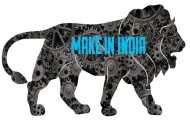‘Make in India’ is highly relevant for the automobile industry
The Indian automobile industry is among the Top-5 industrial sectors in India, according to the Annual Survey of Industries – FY 2013, and engages almost 6% of the country’s manpower. The industry has grown steadily over the past decade driven by economic growth, rising per capita income, low penetration levels and improving accessibility. Over the past five years (i.e. FY 2011-15), the total production of automobiles, including tractors and mining & construction equipment, in India (including exports) have grown at a CAGR of 6.8%. Across segments of the industry, India is positioned amongst the leading markets, globally, providing adequate base for scale benefits in manufacturing.
In volume terms, India ranks as the largest market for two-wheelers as well as tractors. It is also among the Top-5 and Top-10 markets for Medium & Heavy Commercial Vehicles (M&HCVs) and Passenger Vehicles (PVs), respectively. Besides favourable growth prospects, India’s favourable Foreign Direct Investment (FDI) policy, relatively low cost of manufacturing, adequate manpower pool has also attracted several foreign original equipment manufacturers (OEMs) of the industry to invest in India and set-up manufacturing footprint. Today, virtually all the major foreign OEMs across segments of the industry have presence in the Indian market.
Exports form a key part of foreign OEMs plans for India
Apart from setting their eyes on the relatively untapped domestic potential, OEMs’ investments have also focused on leveraging India’s cost competitive manufacturing base and export vehicles out of India. In this context, the passenger vehicle OEMs have taken the lead so far. To give a perspective, till FY10, Maruti Suzuki and Hyundai accounted for over 95% passenger vehicle exports from India. However, over the past five years, their share has come down as OEMs like Ford, Nissan and Volkswagen (VW) have started exporting from India.
This trend is further supported by the fact that many of the OEMs are currently investing in new Greenfield facilities, even when the domestic market is yet to recover completely. Further, most of the incremental investments are coming up in locations like Gujarat and Andhra Pradesh which are closer to the ports. In ICRA’s estimates, nearly Rs 180 billion of Greenfield projects are currently in execution, or likely to start in the passenger vehicle segment alone. In the commercial vehicle segment, while there is only one Greenfield project under development (Rs 30 billion), most other OEMs are focusing on new model development again, with the focus on exports.
Foray of foreign OEMs have helped strengthened Indian auto component manufacturing base but we are still net importers
The foray of global automobile OEMs in India has also benefited the country’s auto component manufacturing industry. From encouraging the formation of joint ventures (with their foreign suppliers) to increasing the sourcing of components locally, foreign OEMs have played an important role in strengthening the capabilities of the Indian auto component manufacturers. As a result, many of the OEMs have managed to achieve fairly high level of localization (in some cases as high as 90%), and reduce dependence on costlier imported components over the past few years. This, coupled with the fact that some of them have also started sourcing components from Indian suppliers for their global requirements, is a reflection of the improving technical and quality standards of India suppliers.
While auto component exports have grown steadily over the past five years (i.e. 14%), India continues to be a net importer of auto components. We believe this scenario is primarily explained by three factors –
a) lack of an efficient ecosystem to support low-cost manufacturing of electronic components
b) continuation of dependence of OEMs (on their global suppliers) for certain high-value critical components like engine and transmission parts, airbags, etc. due to inadequate critical mass of select models, making domestic investments unviable, and
c) growing penetration of cheaper imported tyres, especially for the after-market segment.
India’s ‘Make in India’ campaign can help in encouraging local manufacturing of electronic-based components by offering fiscal incentives considering manufacturing of semi-conductors/electronics is generally capital intensive in nature.
The ‘Make in India’ campaign certainly a positive but needs to address a host of challenges
While the government’s ‘Make in India’ campaign is likely to attract investments from both domestic as well as foreign OEMs, the policy framework will have to encompass a comprehensive range of reforms to improve India’s attractiveness vis-à-vis other automobile hubs. Globally, most of the major automobiles hubs (i.e. Japan, South Korea, Mexico, etc.) have gained prominence not just on the back of favourable growth prospects locally, but also driven by export-friendly policies. Factors such as signing of Free Trade Agreements (FTAs), flexible labour reforms, transparent taxation policies and efficient infrastructure have collectively helped countries in emerging as global manufacturing hubs. In addition, strategic location in proximity to an important automobile market has also helped some nations in gaining competitive advantage. For instance, while Mexico exports almost 80% of the cars produced in the country, nearly two-third of those are sold in the United States.
In India, automobile OEMs have faced challenges due to inadequate availability of railway logistics, basic utilities, and the lack of clarity or changes in the tax regime. All of these factors have adversely impacted their cost structure. For instance, most of the vehicles are transported via roads in India, which adds to the logistics cost. In some cases, changes in taxation policies (like VAT incentive in Maharashtra, uncertainty in computation of excise duty) have delayed the break-even period for some OEMs. In addition, power shortages have also adversely impacted the cost of operations, especially for energy-intensive operations such as die-casting, forging etc. This has propelled both, OEMs and ancillaries to invest in renewable sources of energy and purchase power through energy exchanges. While the government’s focus on improving road, railway and power infrastructure will yield results only over a period of time, the industry could benefit from earlier resolution of labour and land acquisition reforms.
Implementation of GST would enable ease of doing business
India is also at the cusp of implementing the Goods & Services Tax (GST). If implemented in its current form, it will subsume all the applicable taxes and allow manufacturers to avail input tax credit across the value chain. With this, the proportion of the overall tax in a vehicle price may reduce from the current high level of 20-25%, depending on the GST rates finalized. Further, since majority of the sales of any OEM generally happen outside the native state, OEMs are unable to claim input tax credit on state levies for a large majority of their sales. This increases the cost for the end customers.
Additionally, GST will also help build a common India-wide market across the country instead of the state-specific markets that exist now. Accordingly, auto ancillaries and auto OEMs will not have the need to set-up smaller warehouses across multiple states but rather benefit from economies of scale at a few locations.











